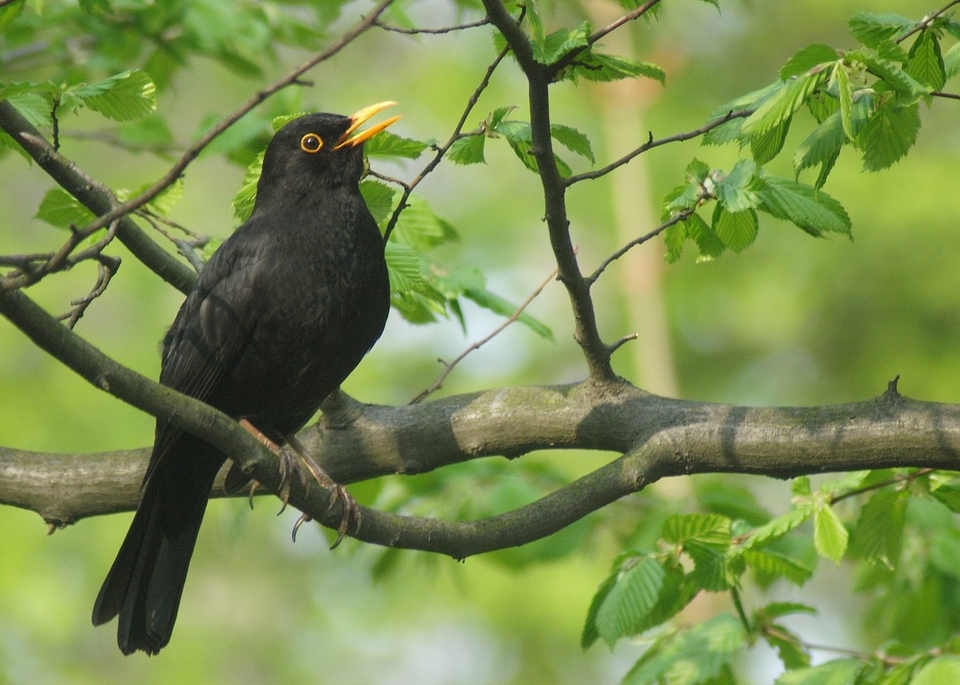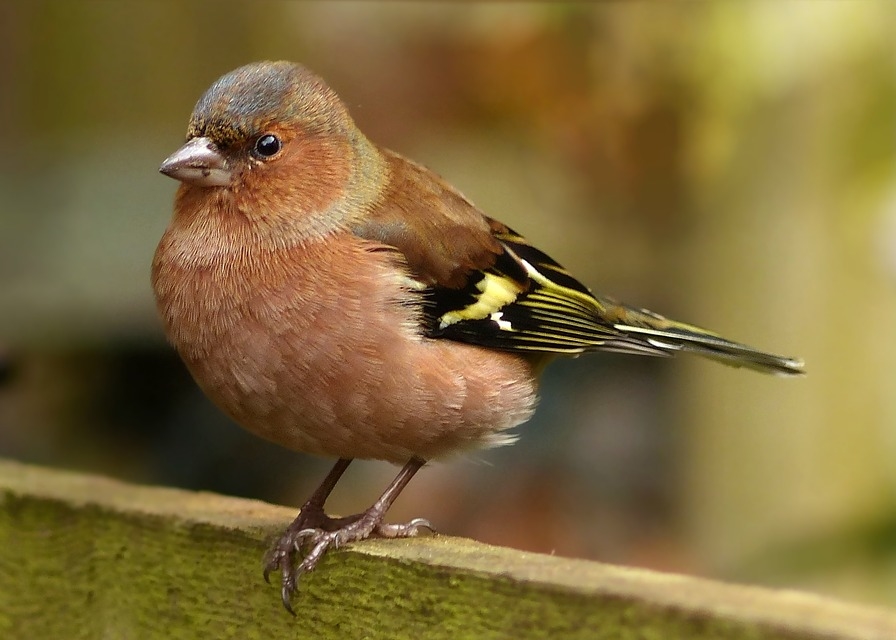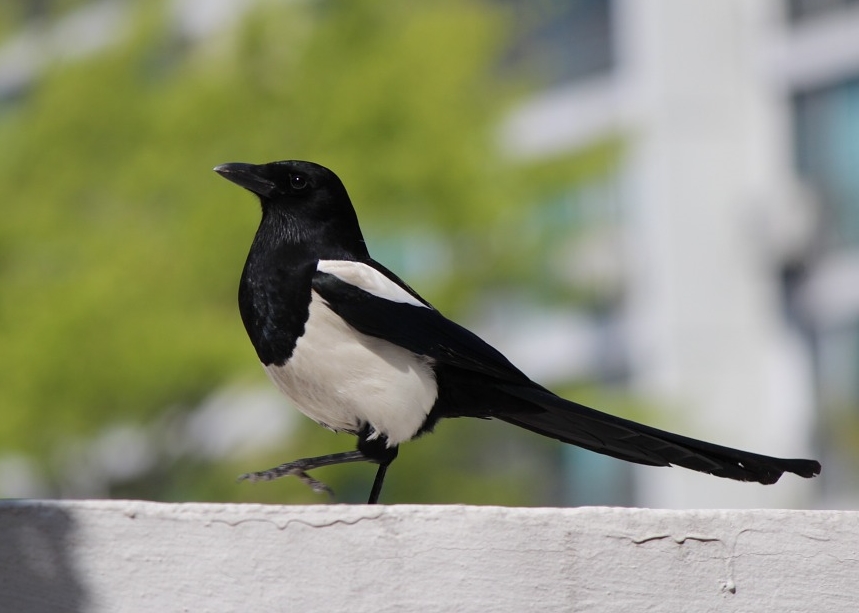Recently, I wrote a blog post about commonly spotted bird species in Akagera National Park (A Beginners Guide to Birding in Akagera). The article proved rather popular, so I thought, why not write one on birdlife in Kigali?
As Rwanda's capital becomes increasingly metropolitan, it's hard to imagine such a place could be brimming with wildlife. From the bustling city centre streets to the serene wetland suburbs, Kigali is teeming with feathered friends. Nyaraturama lake is one place I'd highly recommend for birders. Here, you'll find all manner of aqua-happy species including white-faced whistling duck, red-billed teal, and even pygmy kingfisher!
However, this post contains a list of birds that city dwellers have good to high chances of spotting, even in their own back yard. If you don't have a garden of your own then don't despair! You're just as likely to see many of these birds while out running errands or perhaps dining al fresco.
Red-billed Firefinch
A common and widespread resident of Kigali, the Red-billed Firefinch is a petite red and brown bird of the Estrildidae family. As their name suggests, the bill is a pinkish-red colour. The female has a largely dull brown plumage with red markings on the sides of the face and rump. The male, however, is mostly red with brown plumage restricted mainly to the wings. Both sexes may show small, faint white spots at the sides of the breast.
Variable Sunbird
A dainty little nectar-feeder with the male easily recognizable for its shiny colourful plumage and long curved bill. Females are similar in shape but with dull brown/grey plumage. Sunbirds are often confused with hummingbirds, but the latter are restricted to the American continents, while the former are widespread across Africa and Asia. According to Wikipedia, Rwanda is home to 26 species of sunbird. The Variable Sunbird is probably the most common and widespread.
Yellow-billed Kite
Spend five minutes in Kigali, and I can guarantee you'll spot this medium-large sized raptor. They're most commonly observed in flight, and are distinguishable for their angled wings and long slightly forked tail. Yellow-billed Kites are considered a subspecies of Black Kites, but their plumage is mostly dark brown. It's not uncommon to spot these birds roosting in large flocks across many different habitats including towns, villages and open country.
Ross's Turaco
A striking deep-blue glossed bird that looks entirely out of place in the city. You'll know this bird when you see it. Easily distinguishable features include a bulbous bright-yellow bill and eye patch along with brilliant crimson crest and outer wings. The Ross's Turaco is a fruit-eating bird and in Kigali, has been spotted mainly in mature gardens containing trees that suit their dietary requirements. This spectacular species often duets with a series of musical growls.
Green-winged Pytilia
These plucky little characters are brightly coloured waxbills and very common residents of Kigali. They're usually found feeding on the ground in pairs or small groups. A sexually dimorphic species with males having a red face and breast band. Both sexes have a small red bill, olive green wings and a red tail. Green-winged Pytilia are a very vocal species, using a persistent series of chips, squeaks, and nasal notes.
Hamerkop
A surprisingly common yet extraordinary water bird that has its own taxonomical family. Easily identified from any other bird by its unique shape which includes a long crest and flattened bill that give off a hammerhead appearance. These medium-sized dull-brown waders build enormous tree nests and have been known to share them with other species including Grey Kestrel and Egyptian Goose. They are considered magical or birds of ill omen by the superstitious.
Cinnamon-chested Bee-eater
You could be forgiven for mistaking this species with its smaller cousin, the Little Bee-eater. While they do look very similar, the Cinnamon-chested Bee-eater is quite a lot larger. They belong to a family of easily identifiable birds with signature long curved bills and black eye masks. This species has dark green upper parts and deeper rufous-cinnamon below. Pairs and small groups are quite common in gardens, where they generally perch high up in tree canopies.
Red-cheeked Cordon-bleu
Another small and attractive garden bird and a member of the waxbill family. Their plumage is mostly brown and powder blue and they're often spotted feeding on the ground in pairs or small groups. Like Green-winged Pytilia, the males and females possess non-identical plumage, but the difference is slightly more subtle in this species. Males have a small red patch on the cheek that the females do not exhibit. Their contact call is an often-repeated high-pitched siii siii...
Pied Crow
Many people think of crows as boring birds and even pests. While they do have a tendency to go through your garbage and make a total mess of your outdoor spaces, the corvids are some of the most intellectual animals on the planet. Like just about any species with "pied" in its name, this crow has a boldly marked and distinctive black and white plumage. Their variable calls include both long and short caws in flight, but while perched may utter a deeper call.
Tawny-flanked Prinia
In terms of plumage, the Tawny-flanked Prinia is relatively inconspicuous but they are busy little birds! A small warbler which frequently cock and wave their long tails from side to side. Typically, they are pale-brown/grey but have a distinctive black eyeline and obvious pale supercilium (the plumage feature some birds have which is a stripe running from the base of its beak and runs above the eye). Very common garden bird and often seen in pairs.
Photo by servalpaul
Hadada Ibis
Ever been woken up in the early morning by an annoying and repetitive haa haa ha-aaa? This incredibly noisy bird is so named for its varying bugled and onomatopoeic calls. They are a stocky and predominately dark ibis with green/purple glossed wings and short legs. Pairs and flocks are common and widespread mainly around the suburbs, but it is not unusual to spot them perched in trees located close to the city centre.
Lesser-striped Swallow
Quite a large swallow and fairly common, this species is strongly marked and richly coloured with an extensive bright rufous cap and heavy black and white streaking on the underparts. Sexes are similar, but females tend to have shorter outer-tail streamers. Singing in flight is common, but they're most vocal when perched. These resourceful birds build bowl shaped mud nests on the undersides of suitable structures such as buildings, caves, and tree branches.
Pin-tailed Whydah
Beautiful little birds, but don't be fooled by their endearing nature! This species is a brood parasite, laying their eggs in the nests of a variety of waxbill species. Breeding males have a striking black and white plumage, a red bill and very long, narrow black tail. Non-breeding males are similar in appearance to females. They have a boldly patterned head but relatively bland colours on the lower body. This species is the commonest and most widespread of all whydahs in east Africa.
Brimstone Canary
A small finch with mostly greenish yellow and brown plumage. Easily confused with the Yellow-fronted Canary, but has a heavier pinkish horn bill. They also possess a far lighter malar (cheekbone) stripe than their canary cousins. The rump and mantle are both green with dark streaking. Pairs or singles are commonly spotted in city gardens and their songs vary from a fairly rapid high-pitched chirping, to sweeter, varied refrains.
Cardinal Woodpecker
Not necessarily the only woodpecker that inhabits Kigali, but certainly the most likely to be spotted. The Cardinal Woodpecker is one of the smaller species in the family and the most widespread across the eastern parts of the African continent. Males have a bright red cap whilst females sport a blackish-brown top to the head. Both sexes have lightly streaked sides to the face, well-streaked underparts, and spotted wings.
Cape Dove
The Cape (or Red-eyed) Dove is very similar in appearance to the Ring-necked Dove, but the latter is less prevalent in Kigali. Like the Ring-necked Dove, they possess a black half-collar on the hind of their necks. They have dark red eyes surrounded by a small diamond-shaped area of dull maroon skin. Their call is typically a very rhythmical oo-oo-oo-oo-oo-oo, which almost sounds like "I-am-red-eyed-dove!".
White-browed Robin-chat
A very boldly marked member of the thrush family with bright rufous orange below. The crown and sides of the face are entirely black with a long white supercilium. This species is the most widespread robin-chat in east Africa and is common across many areas of Rwanda. Their song is a simple refrain of three high notes, followed by two lower notes. One of those birds you're likely to spot anywhere in the city and now be able to say, "Oh look, there goes a White-browed Robin-chat!".
African Paradise Flycatcher
Stunning and highly variable, the African Paradise Flycatcher has two distinct colour morphs. A typical rufous male has a slightly crested black or blue-black head merging into grey underparts. The mantle, wings and tail are chestnut with very long central tail feathers. A typical white morph male's chestnut parts are replaced with white plumage. Adult females and immature birds don't possess the long tail feathers. This bird is fairly common in mature gardens.
Northern Fiscal (Common Fiscal)
The Northern Fiscal has been nicknamed "jackie hangman" and "butcher bird" for its rather gruesome eating habits. They use a kind of larder system where they impale their prey on acacia thorns to store for later consumption. Also known as the Fiscal Shrike, they are slim, narrow-tailed birds with white scapulars that form a very obvious "V" across the back. Sexes are very similar with black-and-white plumage, but the females have a small chestnut flank patch.
African Harrier-hawk (Gymnogene)
One of two raptors on the list, the African Harrier-hawk is a large, mostly grey bird with a relatively small slim head and bare yellow facial skin. In flight they have an easily recognisable single white bar across their broad black tail. Their underparts are densely barred black and white. These beautiful predatory birds can sometimes be spotted stealing young chicks from cavity nests using their long and flexible yellow legs.
Tropical Boubou
A black-and-white bird of the bush shrike family that sometimes displays a pinkish tinge on the lower breast extending toward the rump. They also exhibit long white wing stripes for easier identification. Like all boubous, this species is rather stocky and moves actively, but slowly. They are quite common in gardens and green spaces around Kigali. Pairs usually call a melodic wii-hoo wii-hoo duet, so perfectly timed as to sound like one bird.
African Pied Wagtail
Very common and widespread wagtail species that span across most of sub-Saharan Africa. Like all wagtails, they are slim and slender little birds that are often seen walking on the ground whilst constantly bobbing their long tails. As mentioned in the Pied Crow description, the name of the species indicates a black-and-white plumage. Sexes are alike with both having a broad black breast-band. They are also very tame and comfortable around human dwellings.
Dark-capped Bulbul
This species belongs to a group that are notoriously difficult to identify. However, the Dark-capped or "Common" Bulbul is one of east Africa's most widespread birds and is relatively easy to distinguish from its relatives. They are a slim brownish bird with an almost black head, pale belly and a bright yellow vent. Their heads are almost square in shape and their tails are ever so slightly forked. Often spotted in small groups feeding upon small fruits such as berries.
Bronze Sunbird
The second sunbird that made the list and probably the second most widespread of all 26 species in Rwanda. Far less colourful than the Variable Sunbird, this species is aptly named due to the males shiny bronze/green plumage around the head and upper breast. Like most species in this taxonomic family, the female is far more modestly coloured. They are one of the larger species in their family and have one of the loudest and most complex calls of all sunbirds.
Speckled Mousebird
Relatively inconspicuous with almost entirely light brown/grey plumage. They are most notable for their long tails and scruffy crest. Other distinguishing features include whitish cheeks and a blackish patch around the eye. Speckled Mousebirds feed mainly on leaves and shoots and can often be spotted roosting in groups where they'll buff up their feathers. They do this to allow more sunlight to hit their bodies which helps speed up the fermentation process.
Massive thanks to Melihat Veysal, Mihir Bhatt (Mihirmax Bhatt Photography), Obed Temba Tuyumvire, Paul Rushworth (servalpaul) ,and Shelly Anne Rosen of Intore Expeditions for contributing some of their amazing photos to this blog. If you're interested in birdlife in Rwanda, why not join the Facebook group Birding in Rwanda where you can find more fantastic images and updates!
Images without watermark or owner written in caption are Copyright © Leigh Woods 2017 with all rights reserved.































































